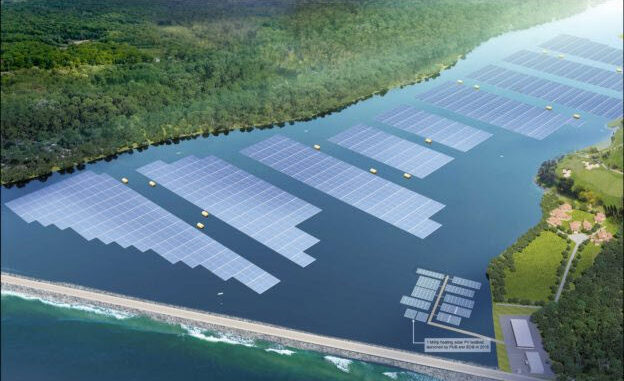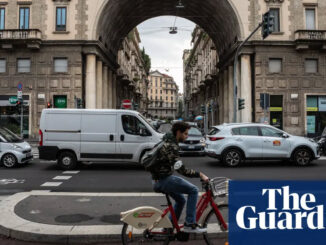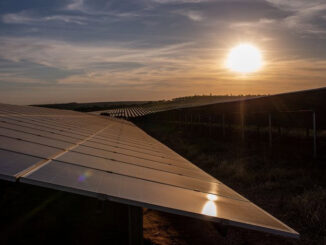
Singapore merely occupies 728.3km² in land area, which is equivalent to the size of two and a half Taipei Cities or half of Los Angeles. As it is a relatively small country, the first issue that is likely to be talked about when it comes to developing renewable energy in the region is, are there enough locations for generating green electricity? As surprising as this may sound, the answer is actually yes. Not only does Singapore currently have the available resources for developing green energy, but it is also planning to use these resources to establish the largest floating solar power plant in Southeast Asia.
Singapore is known to be a prosperous financial sovereign island city-state that has one of the most intense degree of carbon emission. The floating solar power plant that it is planning to build will be situated at the Tengeh Reservoir located to the west of Singapore, which flows to the Straits of Johor. The power plant extends from the lake to the sea, and will occupy an area that is equivalent to 45 soccer fields that will contain a total capacity of 60MW upon completion.
Numerous countries, including Japan, South Korea, and the US, have proposed medium and long range development projects for power sources in recent years, and declared the determination in implementing zero carbon emission. The Government of the Republic of Singapore announced in 2020 to lower the carbon emission to 65 million tons per year after 10 years, before cutting the figure in half by 2050. It also announced “The Singapore Green Plan 2030”, which comprises of an initiative to reduce rubbish by 20% by 2026, the deployment of 60K electric vehicle charging stations within 10 years, and the elevation of green building standards. In terms of green energy, Singapore also hopes to achieve a fourfold increase in the installed capacity of solar that will satisfy 2% of power consumption. It will extend that figure to 3% by 2030 so that it can provide enough power for 350K households. This blueprint will also renew constantly.
Singapore is currently striving to reduce the dependency on natural gas (96%), coal, and fossil fuels, though the establishment of green energy is considered an arduous task for the city-state. Thus, locking onto the vast ocean is imperative apart from seeking excessive or usable areas. Jen Tan, Sembcorp Industries’ Head of Solar in Southeast Asia, commented that there is an insignificant amount of available lands after solar establishments are implemented on rooftops and usable lands. According to Tan, the true potential lies on floating solar.
Shawn Tan, Sembcorp Industries’ VP of Engineering, commented that the particular site used can serve as the precedent for additional development projects of floating solar in Singapore and nearby countries.
However, being surrounded by the sea on three sides, Singapore is not only an important financial center, but also the hub of international sea transportation for the Pacific Ocean and the Indian Ocean, and the sea does not provide much space despite occupying a vast area. These challenges will be waiting for Singapore in the future. According to Red Constantino, the Executive Director of the Institute for Climate and Sustainable Cities, Singapore will eventually have to choose between whether it wants to develop a solar power plant or a seaway in its sea area.



